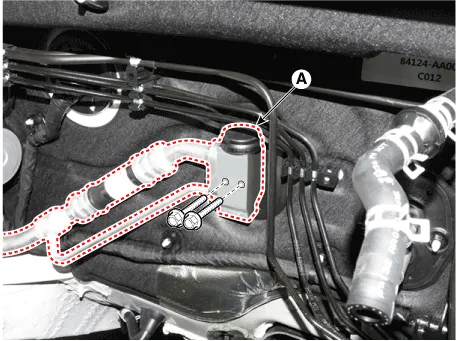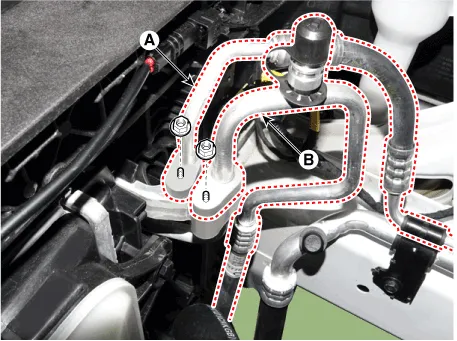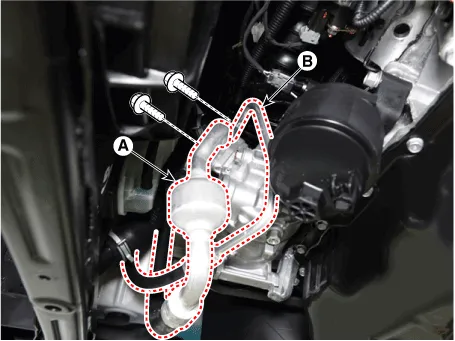Hyundai Elantra (CN7): Air Conditioning System / Refrigerant Line
Components and components location
| Components Location |

| 1. Refrigerant Pipe Assembly |
Repair procedures
| Replacement |
| 1. | If the compressor is marginally operable, run the engine at idle speed, and let the air conditioning work for a few minutes, then shut the engine off. |
| 2. | Disconnect the negative (-) battery terminal. |
| 3. | Recover the refrigerant with a recovery / charging station. |
| 4. | Remove the bolts and the expansion valve (A) from the evaporator core.
|
| 5. | Loosen the mounting nuts, and then disconnect the discharge line (B) and liquid line (A) from the condenser.
|
| 6. | Disconnect the A/C pressure transducer connector (A).
|
| 7. | Remove the engine room under cover. (Refer to Engine Mechanical System - "Engine Room Under Cover") |
| 8. | Remove the bolts, then disconnect the suction line (A) and discharge line (B) from the compressor.
|
| 9. | Remove the refrigerant line assembly (A) to the upper of engine room.
|
| 10. | To install, reverse the removal procedure.
|
Repair procedures Oil Specification1.The HFC-134a system requires synthetic (PAG) compressor oil whereas the R-12 system requires mineral compressor oil.
Description and operation DescriptionThe compressor is the power unit of the A/C system.It is located on the side of engine block and driven by a V-belt of the engine.
Other information:
Hyundai Elantra (CN7) 2021-2025 Service Manual: Evaporator Temperature Sensor
Description and operation DescriptionThe evaporator temperature sensor will detect the evaporator core temperature and interrupt compressor relay power in order to prevent evaporator from freezing by excessive cooling. The evaporator temperature sensor has the Negative Temperature Coefficient (NTC).
Hyundai Elantra (CN7) 2021-2025 Service Manual: ADAS Parking ECU (ADAS_PRK)
Components and components location Components and Components Location Repair procedures Removal • Use a plastic panel removal tool to remove interior trim pieces without marring the surface.• Take care not to bend or scratch the trim and panels.
Categories
- Manuals Home
- Hyundai Elantra Owners Manual
- Hyundai Elantra Service Manual
- Vehicle Information
- Exterior Overview
- Volume and Weight, Air Conditioning System
- New on site
- Most important about car







